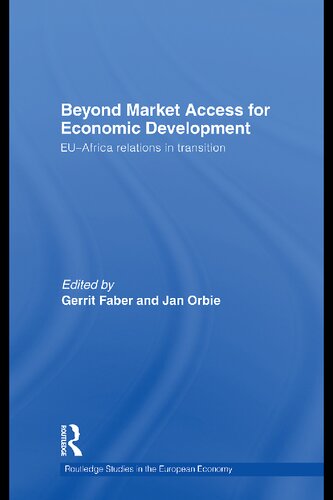

Most ebook files are in PDF format, so you can easily read them using various software such as Foxit Reader or directly on the Google Chrome browser.
Some ebook files are released by publishers in other formats such as .awz, .mobi, .epub, .fb2, etc. You may need to install specific software to read these formats on mobile/PC, such as Calibre.
Please read the tutorial at this link: https://ebookbell.com/faq
We offer FREE conversion to the popular formats you request; however, this may take some time. Therefore, right after payment, please email us, and we will try to provide the service as quickly as possible.
For some exceptional file formats or broken links (if any), please refrain from opening any disputes. Instead, email us first, and we will try to assist within a maximum of 6 hours.
EbookBell Team

0.0
0 reviewsThe Economic Partnership Agreements between the European Union and the Africa, Caribbean, and Pacific (ACP) countries have drastically restructured Europe’s trade architecture towards the third world. This volume examines the consequences of EPAs for development in sub-Saharan Africa (SSA).
Starting from the observation that the establishment of free trade as such will substantially impact upon economic development, the different contributions focus on the potential contribution of non-traditional aspects of EPAs. More specifically, the authors analyze the role of Aid for Trade schemes, regulatory integration issues and broader foreign policy considerations. How can these non-market access aspects stimulate development in Africa, and how have they been addressed in the EPAs? In short, this brings us to the question whether the ‘light version EPAs’ as they currently stand are a missed chance or a blessing in disguise?